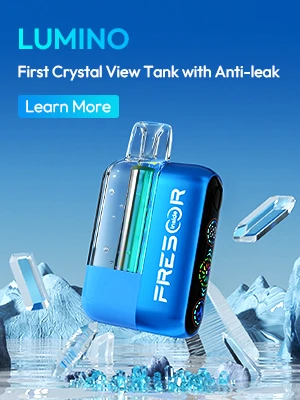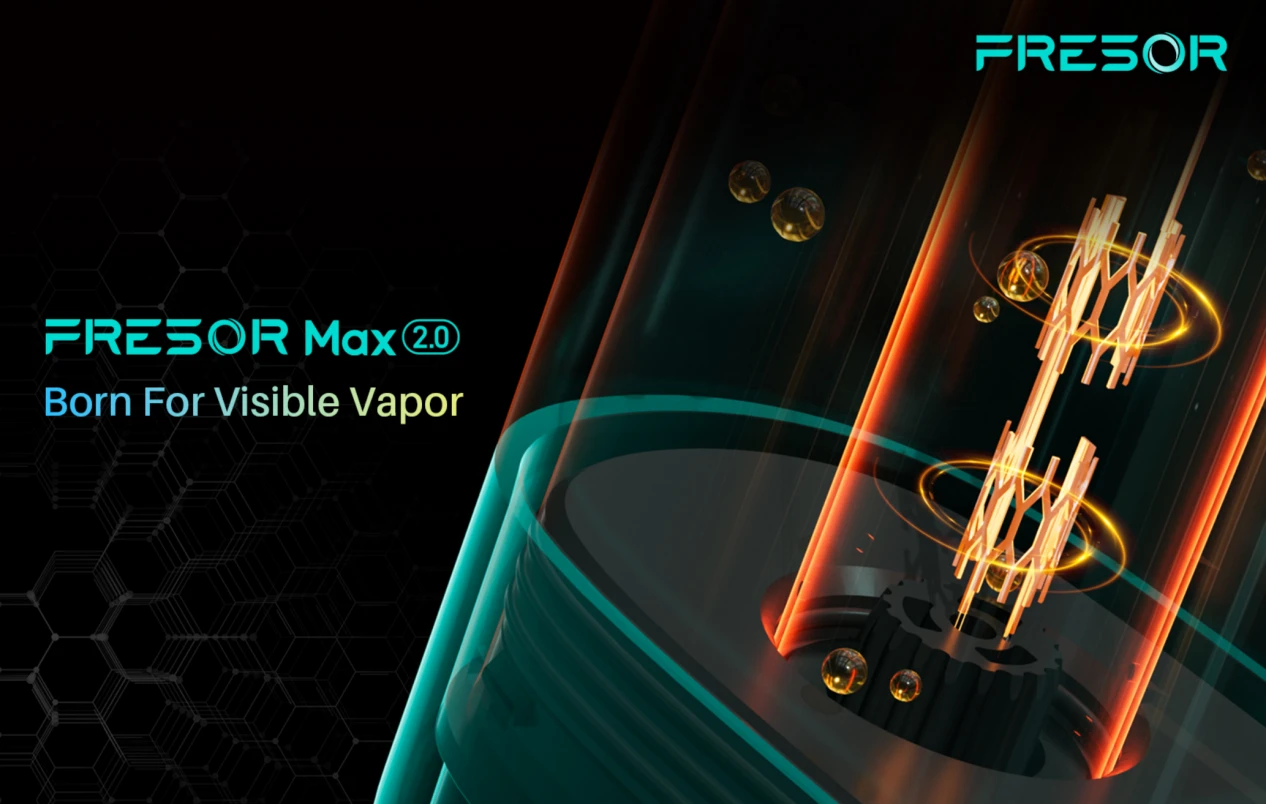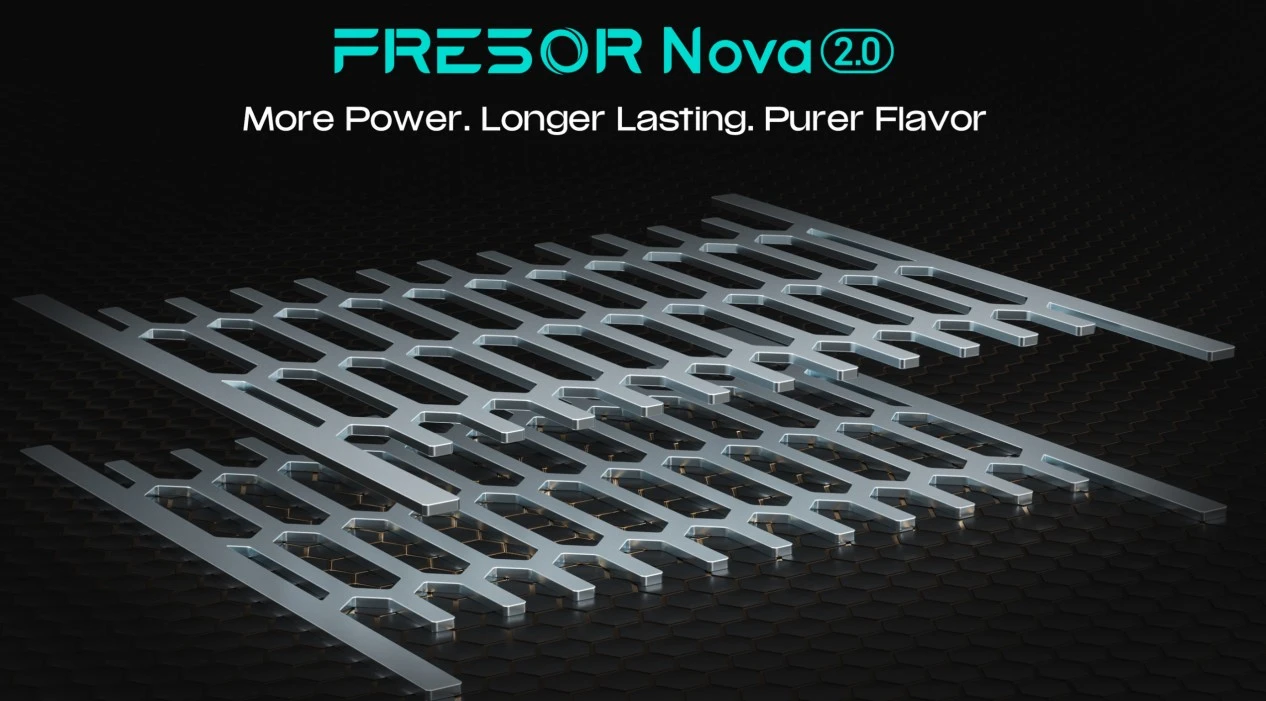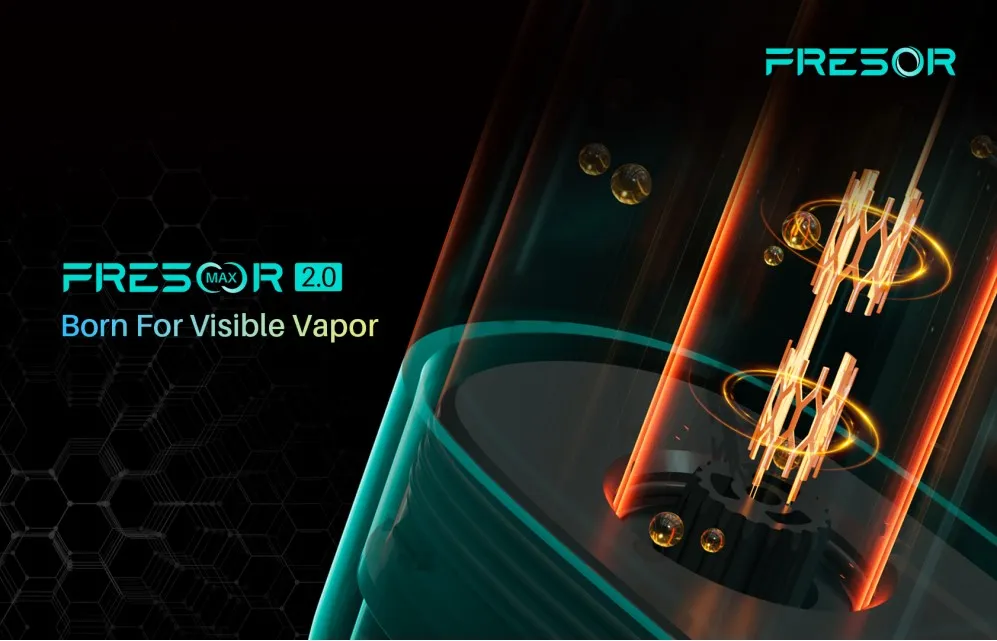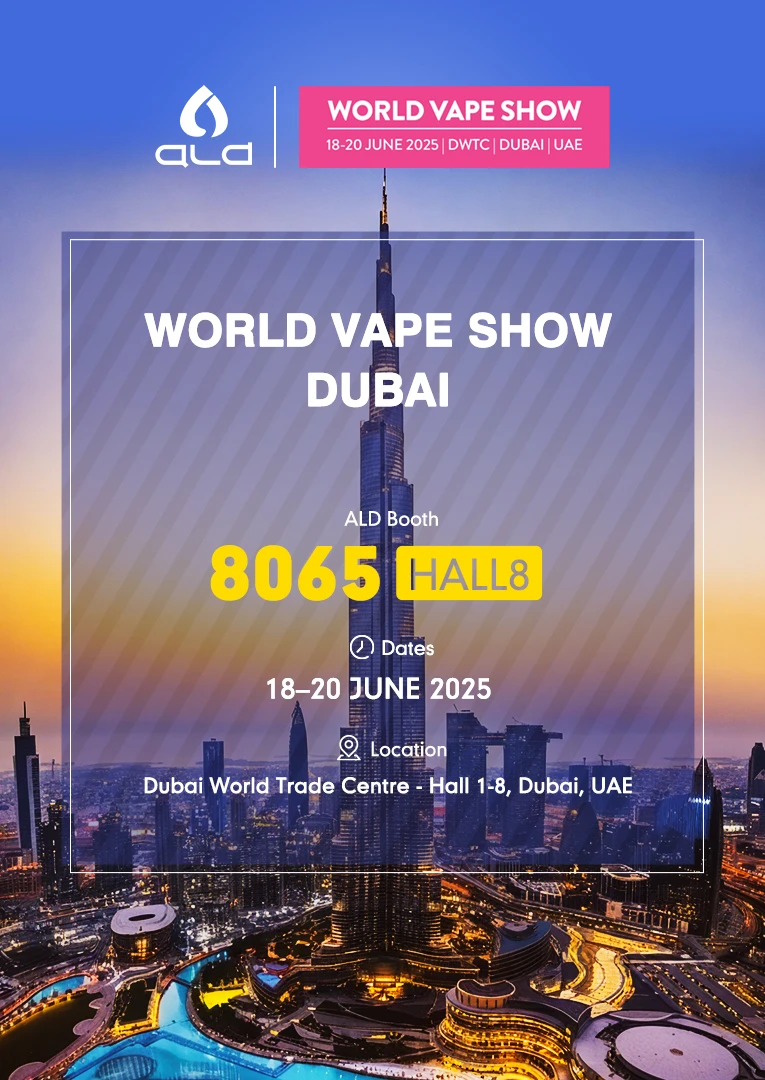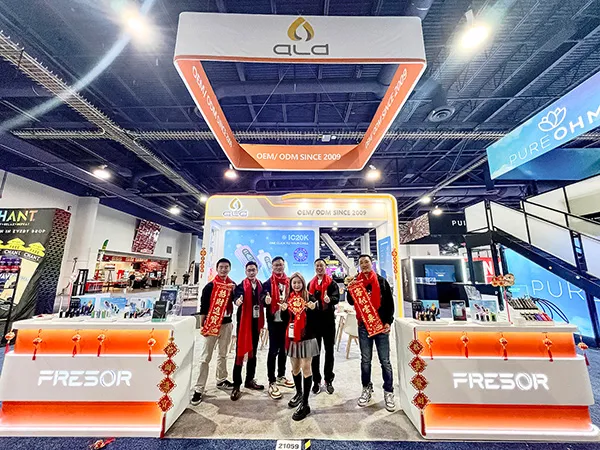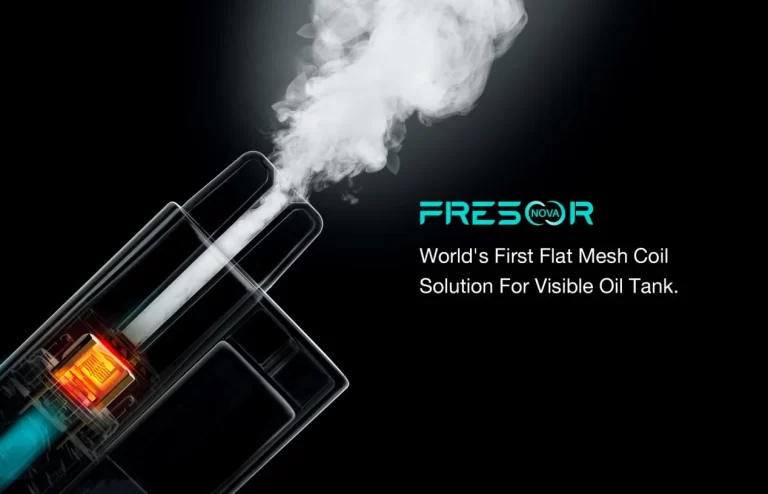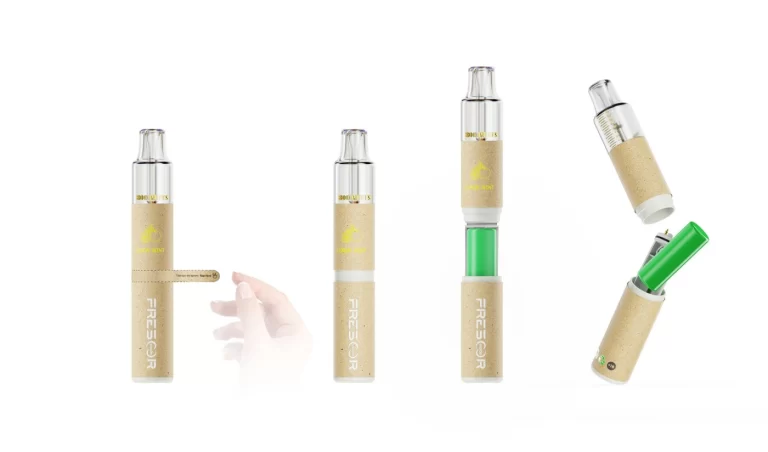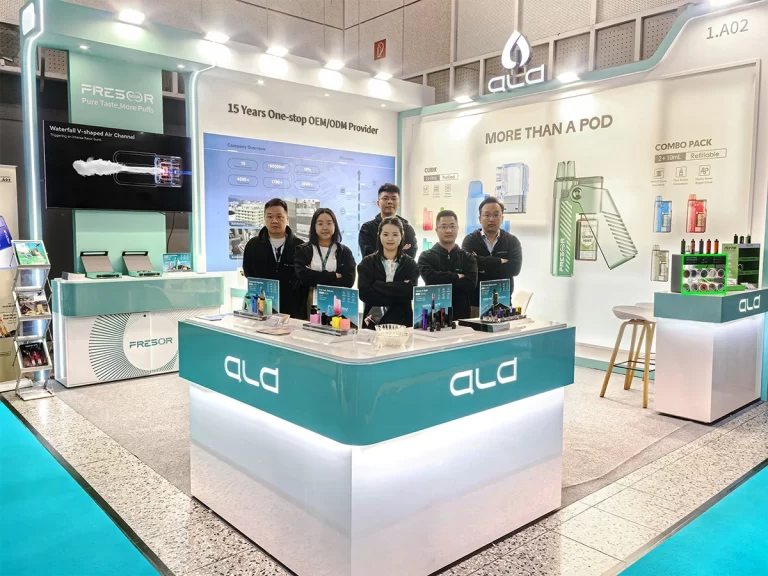Looking at the evolution of e-cigarette products, whether they were popular in the past or are currently trending, one common external feature is gradient colors. Gradient colors can involve a transition from one color to another or a gradual shift in the depth of a single color. By incorporating rich layers of colors and a sense of flow, products achieve a high-end, exquisite texture, adding unique visual appeal and artistic value.
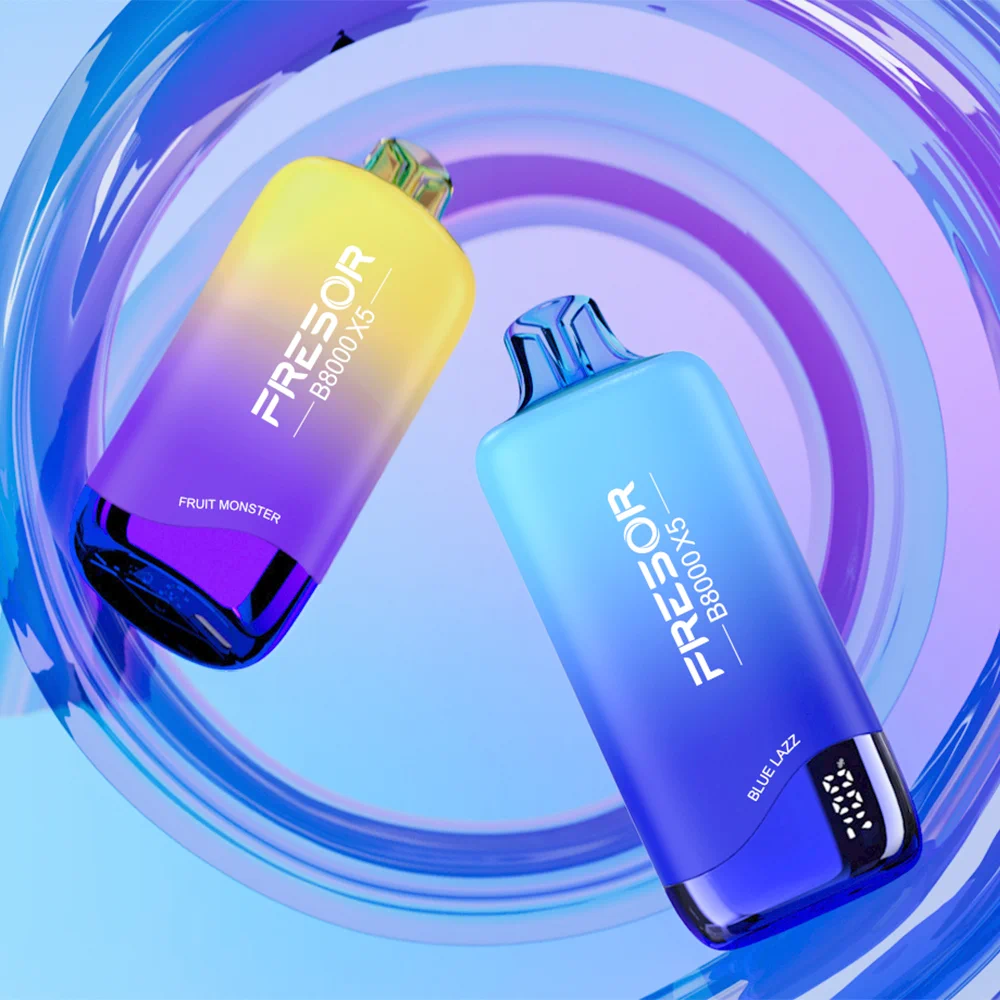
Gradient Colors – FRESOR B8000 X5
There are two main reasons why gradient colors have remained popular for so long. Firstly, they look attractive, and secondly, the manufacturing process is stable and cost-effective. There are various methods to achieve gradient colors, including anodizing, spraying, PVD coating, UV transfer printing, silk printing, and color printing, but not all of these methods can ensure both stable yield and cost advantages. In the e-cigarette industry, the commonly used processes for gradient colors are anodizing and spraying. Additionally, there are new gradient color processes to consider, such as gradient color injection molding.
- Anodizing
Anodizing is a process where an oxide film is formed on the surface of a metal. Pure anodization only involves the creation of an oxide film. If coloring is required, a dyeing and sealing process is added to achieve the desired colors. This process is suitable for aluminum alloy components. Gradient colors are achieved by controlling the dyeing time in the dyeing tank. The longer the dyeing time, the more dye molecules enter the oxide film, resulting in a darker color. By using computer control to determine how long specific parts should stay in the dye, a uniform gradient color effect can be achieved.
The main process includes degreasing, alkali etching, chemical polishing, neutralization, anodizing, dyeing, sealing, hot water rinsing, and drying.
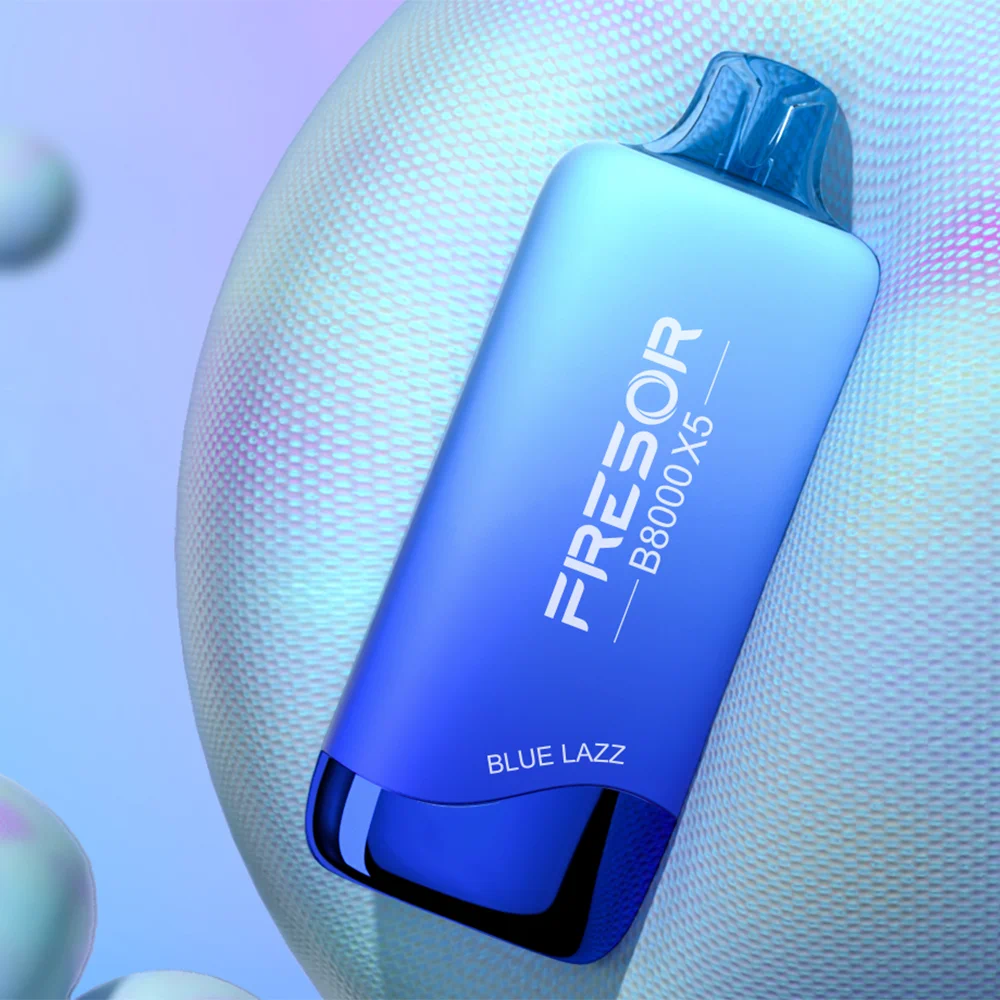
Anodizing
- Spraying (Also Known as Painting)
Spraying involves atomizing paint and applying it to the surface of an object. It can be used to obtain coatings with properties such as wear resistance, corrosion resistance, heat insulation, conductivity, insulation, sealing, and lubrication on various substrates. This method has a wide range of applications and is considered a traditional technique. Gradient color spraying uses equipment that allows for the gradual transition from one color to another. The equipment modification is relatively simple, and the efficiency is high. Simple gradient color spraying can be achieved, making it suitable for mass production with a high yield.
During the spraying process, multiple layers of colors (usually 3 to 4 layers) are applied to the product. The key is to control the thickness of the coatings, allowing each layer to transition gradually from one color to another. The choice of paint is crucial. It not only provides the surface substrate with properties like wear resistance and corrosion resistance but also contributes to the decorative effect, with brightness being an important factor.
The main process includes substrate treatment, sequential spraying of functional primer, gradient paint, and glossy paint, followed by baking or air drying.
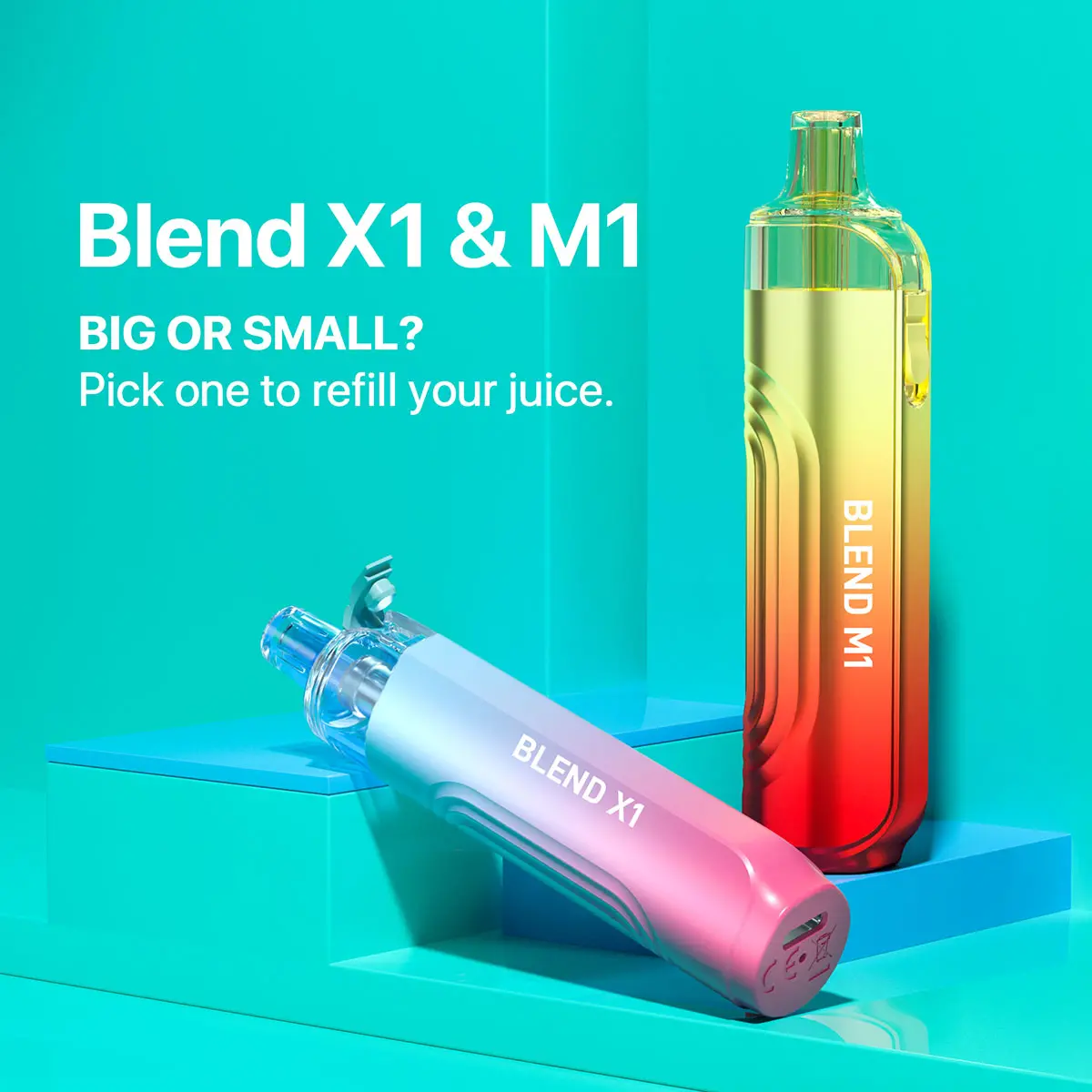
Spraying – Blend X1 & M1
- Gradient Color Injection Molding
Gradient color injection molding is a recent process introduced by ABOGE. It uses a two-color molding method, injecting two different-colored materials through precise injection control to create a gradient effect or a multi-layer co-injection product. However, there is limited information available regarding the application of this process in the e-cigarette industry. This brief introduction is provided for those interested in exploring this method further.
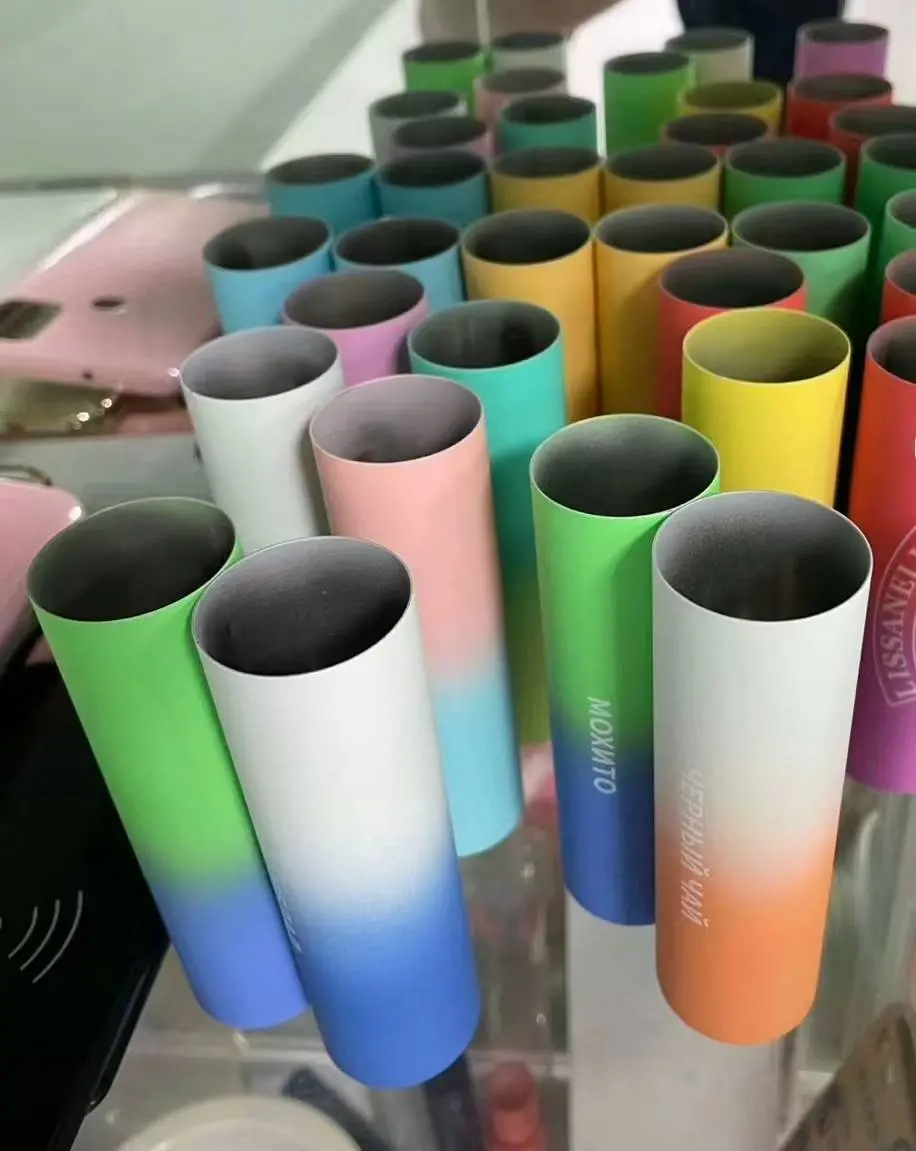
Gradient Color Injection Molding
- Others
Of course, there are many other methods to achieve gradient colors, including PVD coating, UV transfer printing, silk printing, color printing, and more. Different processes are suitable for different needs. For large-scale production, processes like spraying, anodizing, and injection molding are more appropriate. For short-run batch production with high efficiency, UV printing can be considered.
Gradient colors continue to be a popular choice for e-cigarette manufacturers due to their visually appealing appearance and the availability of reliable manufacturing processes. Whether through anodizing, spraying, or other methods, these gradient colors enhance the aesthetics of e-cigarette products, making them exquisite and timeless in their design





